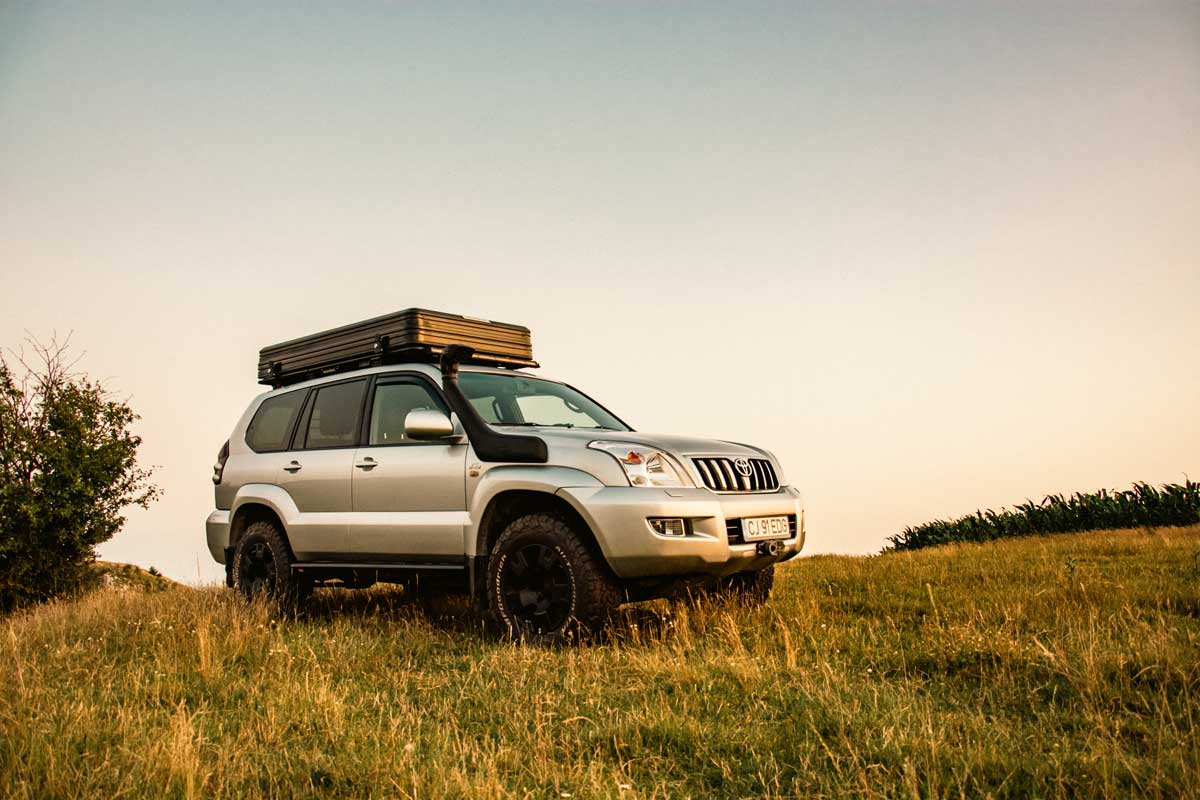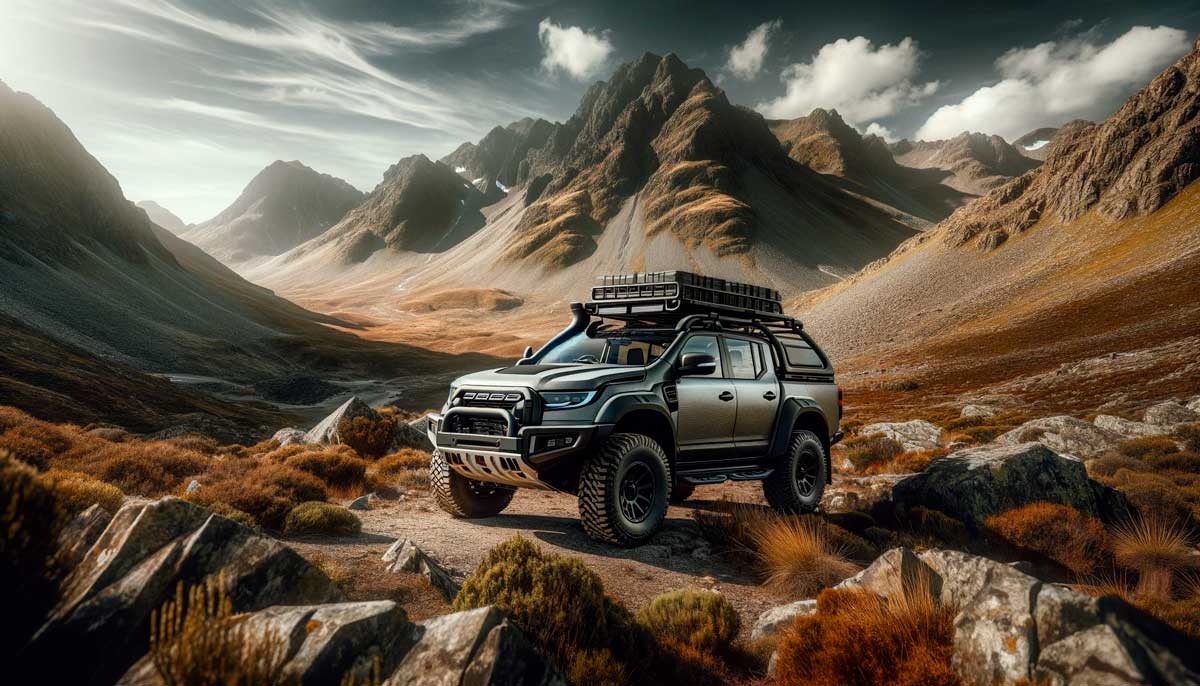Weight Matters: Ensuring Your Car Can Handle a Rooftop Tent Adventure

Welcome to the elevated world of rooftop tent camping! It's a realm where the freedom of the open road meets the enchantment of sleeping under the stars – all from the comfort of your vehicle. But, as thrilling as it sounds, there’s an important aspect we need to tackle head-on: the weight of your rooftop tent and its impact on your vehicle.
Here's the essence of the matter: while rooftop tents offer unparalleled convenience and adventure, they also bring additional weight to your car's roof. This isn't just about whether your car can carry the tent; it's about understanding how this extra load affects your car's performance, handling, and safety. This article is your guide to navigating these weighty considerations safely. We’ll delve into the specifics of rooftop tent weights, their implications on various vehicle types, and the fine balance between adventure readiness and vehicle safety.
Whether you’re a seasoned camper or a newbie excited to explore this unique form of travel, understanding the dynamics of your car and tent combination is crucial. It’s about making informed choices to ensure your adventures are not just breathtaking but also safe. From the nuances of car roof dynamic and static weight limits to fitting the tent to your SUV or pickup truck, we’ve got you covered. Let’s embark on this journey of knowledge and preparation, ensuring your rooftop tent adventure is as carefree as it is exhilarating.
Understanding Rooftop Tent Weight
Rooftop tents are a game-changer in the world of adventure travel, but before you set off into the sunset, it's crucial to understand the weight factor. These tents typically weigh between 50 and 100 kg (110-220 lbs) or even more, a range that accommodates various designs and sizes. It's not just about the tent's weight; this figure also encompasses the mounting system and any additional gear you might tuck away inside.
The weight of a rooftop tent is influenced by several factors. Material choice plays a significant role – heavier fabrics and robust frames add extra pounds but offer more durability and weather resistance. Our EDGE Overland rooftop tents for cars and SUVs bring the best of both worlds - a robust, durable design with all the comfort features, whilst maintaining the weight as low as possible. Size is another critical factor. A larger tent designed for a family will naturally weigh more than a compact model suited for solo adventurers. Additionally, features like built-in mattresses, awnings, and extended canopies contribute to the overall weight.
Why does this matter? Knowing your tent’s weight is essential for ensuring your vehicle can handle the load. Overloading your car's roof can affect handling, increase the risk of accidents, and even void your vehicle’s warranty. Thus, understanding the weight of your rooftop tent is the first step in planning a safe and enjoyable adventure. It’s about striking the perfect balance between comfort in the wild and the capabilities of your vehicle. With this knowledge, you're all set to pick a tent that not only fulfills your adventurous spirit but also respects the integrity of your vehicle.

Best Cars for Rooftop Tents
When it comes to selecting the best vehicle for your rooftop tent adventure, it’s essential to focus on models that combine robust construction with a reliable roof weight capacity. European roads and landscapes call for vehicles that can handle both the urban sprawl and the rugged countryside, all while supporting the extra weight above.
SUVs and crossovers are typically the go-to choices. The Toyota LandCruiser, with its solid build and ample roof capacity, stands out as a great option. Its European design and versatility make it ideal for both city driving and off-road escapades. Another excellent choice is the Land Rover Discovery. Known for its off-road prowess and substantial roof-loading capability, it’s a vehicle that effortlessly combines luxury with adventure-readiness.
For those who prefer something more compact, the Subaru Forester offers a remarkable balance of roof strength and all-terrain capability. Its reputation for reliability and excellent handling in diverse conditions makes it a favorite among outdoor enthusiasts.
In the realm of pickups, the Ford Ranger or the VW Amarok are strong contenders. Widely available across Europe, they offer the durability and strength needed to support heavier rooftop tents, making it perfect for adventurous families or groups.
Each of these models brings something unique to the table, but they all share the essential qualities needed for a safe and enjoyable rooftop tenting experience: strength, reliability, and a capacity to handle the extra weight of your home-away-from-home. By choosing the right vehicle, you ensure that your elevated camping adventure is as safe as it is thrilling.
Impact of Rooftop Tents on Cars
Mounting a rooftop tent on your car is not just about adding a mobile sleeping area; it's a change that affects your vehicle's overall functionality. The primary concern here is the impact on the vehicle's center of gravity. Adding weight atop your car, especially something as significant as a rooftop tent, raises the center of gravity. This shift can alter handling characteristics, making the vehicle more top-heavy and susceptible to wind gusts, and potentially affecting maneuverability during sharp turns.
Additionally, the extra weight impacts fuel efficiency. The heavier your load, the harder your engine needs to work, especially when accelerating or driving uphill. There's also the aspect of aerodynamics. Rooftop tents, create additional wind resistance, which can lead to increased fuel consumption. It's crucial to bear these factors in mind and to drive accordingly when your vehicle is equipped with a rooftop tent. Careful, adjusted driving can mitigate some of these effects, ensuring your journeys remain as safe as they are adventurous.

Understanding Car Roof Dynamic and Static Weight Limits
Grasping the concept of car roof dynamic and static weight limits is pivotal for any rooftop tent enthusiast. These two terms, often found in your vehicle's manual, are crucial indicators of how much weight your car can safely handle, both in motion and at rest.
Dynamic Weight Limit
The dynamic weight limit refers to the maximum weight your car's roof can bear while the vehicle is moving. This includes the weight of the rooftop tent and any additional gear stored inside it during transit. It's determined by the vehicle manufacturer and takes into account factors like the vehicle's structural integrity, handling, and performance under various driving conditions. Exceeding this limit can lead to compromised vehicle handling, increased strain on the suspension, and even structural damage.
European cars are designed with specific dynamic load capacities. For instance, vehicles like the Volvo XC90 or the BMW X5, renowned for their sturdy build, typically offer higher dynamic weight limits, making them ideal for rooftop tent installations. It's essential to check your specific vehicle's manual for these details to ensure safety and compliance.
Static Weight Limit
On the other hand, the static weight limit is the weight your vehicle can support when stationary. This is particularly important for rooftop tents, as the weight while camping will include the tent, the rack system, and the weight of occupants. The static weight limit is always higher than the dynamic one, as the car doesn’t have to deal with the additional forces experienced while driving. Usually all cars are designed such that their roof can sustain the weight of the car for safety reasons. So considering this aspect, you will probably not exceed the static limit, so it shouldn't be that big of a concern. Most modern SUVs and trucks are designed to handle significant static loads but always refer to your vehicle's specifications to be sure.
Here are some dynamic weight limits of common car models
| Vehicle Model | Roof Load Capacity (Dynamic Weight) |
|---|---|
| Alfa Romeo Stelvio | 75 kg |
| Audi Q3 | 75 kg |
| Audi Q5 | 75 kg |
| Audi Q7 | 100 kg |
| BMW X1 | 75 kg |
| BMW X3 | 100 kg |
| BMW X5 | 100 kg |
| Citroën C5 Aircross | 70 kg |
| Dacia Duster | 50-100 kg (depending on model) |
| Fiat 500X | 60 kg |
| Fiat Fullback (pickup) | 100 kg |
| Ford Fiesta Active (crossover) | 75 kg |
| Ford Kuga | 75 kg |
| Ford Ranger (pickup) | 100 kg |
| Hyundai Tucson | 100 kg |
| Jaguar E-Pace | 75 kg |
| Jaguar F-Pace | 75 kg |
| Kia Sportage | 100 kg |
| Land Rover Discovery | 75-100 kg (depending on model) |
| Land Rover Range Rover Evoque | 75 kg |
| Land Rover Range Rover Sport | 100 kg |
| Mercedes-Benz GLE | 100 kg |
| Mercedes-Benz GLA | 75 kg |
| Mercedes-Benz GLC | 75 kg |
| Mercedes-Benz X-Class (pickup) | 100 kg |
| Mitsubishi L200 (pickup) | 80 kg |
| Nissan Navara (pickup) | 100 kg |
| Nissan Qashqai | 75 kg |
| Opel/Vauxhall Grandland X | 85 kg |
| Peugeot 3008 | 80 kg |
| Peugeot 5008 | 80 kg |
| Porsche Cayenne | 100 kg |
| Renault Captur | 75 kg |
| Renault Kadjar | 75 kg |
| Seat Ateca | 75 kg |
| Skoda Kodiaq | 75 kg |
| Skoda Yeti | 75 kg |
| Toyota Hilux (pickup) | 75 kg |
| Toyota RAV4 | 75 kg |
| Volkswagen Amarok (pickup) | 100 kg |
| Volkswagen Tiguan | 75 kg |
| Volkswagen Touareg | 100 kg |
| Volvo XC40 | 75 kg |
| Volvo XC60 | 100 kg |
| Volvo XC90 | 100 kg |
Attention: Always check your vehicle's manual before installation, because certain models and model years can have different load ratings!
Attachment Options: Roof Bars and Roof Racks
When it comes to attaching a rooftop tent to your vehicle, the choice typically boils down to two main options: roof bars (cross bars) and roof racks. Each option has its own set of advantages and considerations, particularly concerning the installation and overall stability of your rooftop tent.
Roof Bars (Cross Bars)
Roof bars are a popular choice for those seeking a streamlined and less intrusive method of mounting a rooftop tent. They are generally easier to install and remove, offering a flexible option for adventurers who use their rooftop tent occasionally or are conscious of maintaining their vehicle’s aesthetics. However, the simplicity of roof bars does come with limitations. They usually have lower weight capacities compared to roof racks, making them more suitable for lighter tents and less rugged terrain.
Roof Racks
Roof racks, on the other hand, are the go-to option for serious overlanders and frequent users of rooftop tents. Offering a more robust and stable platform, they can accommodate heavier tents and provide additional space for extra gear. This makes them ideal for extended trips or adventures in more demanding environments. Roof racks do, however, add more weight and wind resistance, potentially affecting fuel efficiency. Their installation can also be more complex and permanent, a consideration for those who prefer a more temporary setup.
Hardtop Canopies & Bed Racks for Pickup Trucks
For pickup truck owners, hardtop canopies present an excellent installation option. These canopies provide a secure and stable platform for mounting rooftop tents while offering additional storage space. They also protect gear from the elements and can enhance the overall aesthetic of the vehicle. Another option for pickup trucks are bed racks, which are metalic racks mounted on top of the pickup bed and thus creates a sturdy frame on which to install the rooftop tent.

Ready to Hit the Road
As we wrap up, it's clear that rooftop tent camping offers an unparalleled blend of adventure and convenience. However, this exciting venture comes with its own set of considerations - chiefly, understanding the weight dynamics and ensuring your vehicle is up to the task. By carefully selecting the right tent, understanding your car's dynamic and static weight capacities, and choosing the appropriate mounting hardware, you can embark on a rooftop camping journey that is both safe and exhilarating. So, equip yourself with this knowledge, choose your gear wisely, and set forth on an adventure that elevates your camping experience to new heights. Happy camping!
Published on: 31 January 2024
Back to our Blog
